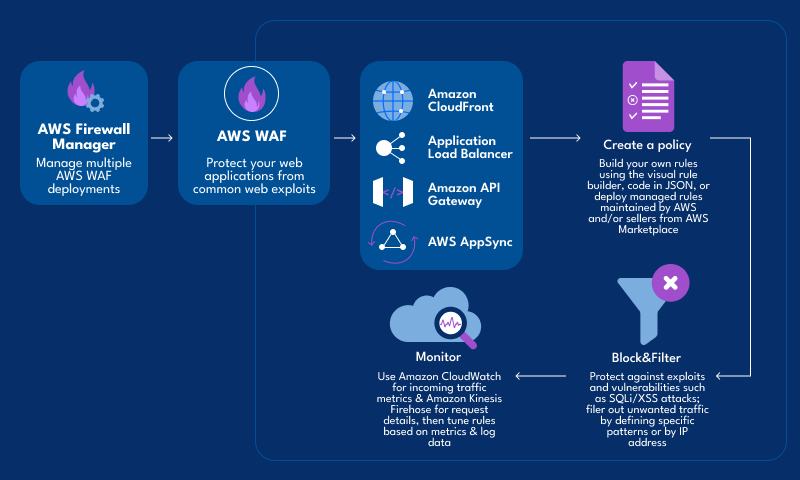AWS WAF is a service that reduces the number of changes your website undergoes. It checks for changes in your website, and if any are found, it immediately notifies you of them. This helps to keep your site secure, reduce the number of change requests, and thereby make it more stable.
In this article, we cover the various AWS WAF pricing plans, as well as the additional costs associated with each of them. You will learn about the cost of enabling WAF on your AWS website, as well as the cost of using the various AWS WAF features.
What is AWS WAF?
AWS WAF is a service that you can use to help secure your Amazon Web Services (AWS) applications and services. It is an Application Behavior Monitoring (ABM) system that continuously monitors traffic on your AWS application, and then applies rules to it. The AWS WAF service is designed to act as an intrusion detection and prevention system while providing the ability to inspect, block, and modify traffic to your AWS infrastructure. It can be used to monitor traffic within your AWS infrastructure or between AWS and non-AWS environments.
How Well Does AWS WAF Work?
We tested AWS WAF to find out how well it works. We used it to protect an existing website against potential threats, and then compared the performance of the site with the protected one. We found that AWS WAF works, but there are some limitations.
AWS WAF can detect malicious and abusive access attempts, but cannot stop them from executing if attackers are in the same network as the protected AWS resources. It can, however, detect it, and alert you so that you can take preventive action.

AWS WAF Pricing
There are three AWS WAF pricing plans – Basic, Standard, and Premium. The Basic plan costs $2 per month, $2 per hour, or $48 per month for up to 50 rules. The Standard plan costs $10 per month and $10 per hour for up to 100 rules. The Premium plan costs $50 per month and $50 per hour for up to 500 rules.
If you use AWS CloudFormation, you can also create an AWS WAF plan that will be billed as per-minute or per-hour.
The table below summarizes the AWS WAF pricing plans, and how to get started with them.
Additional Costs of Using AWS WAF
AWS WAF provides you with the ability to inspect, block, and modify traffic to your AWS infrastructure. However, this comes at a price – it incurs an hourly charge of $10 per hour. This means that you will have to pay $110 every month just to use AWS WAF.
While the Basic, Standard, and Premium plans come with 50, 100, and 500 rules, respectively, you must pay a minimum $2 per hour to use each rule. This means that you will have to pay $40 every month to use AWS WAF as a minimum.
Final Words: Should You Use AWS WAF?
AWS WAF is designed to help you protect your AWS infrastructure from attack. It can alert you to potential threats, and help you take preventive action.
We found, however, that its performance was poor – it didn’t detect malicious access attempts, especially when those attempts were conducted via the same network as the protected AWS resources.
That being said, AWS WAF can be used to help you reduce the number of change requests on your AWS website by automatically enabling AWS WAF.
There are, however, some limitations – AWS WAF can’t stop attackers from executing their attack, and can only detect such attacks.
Although AWS WAF can reduce the number of change requests on your AWS website, it doesn’t actually secure your site – it’s a form of defense in depth.
That being said, AWS WAF can be used to help you reduce the number of change requests on your AWS website by automatically enabling AWS WAF.
If you decide to go ahead and use AWS WAF, it’s important that you understand the costs associated with doing so, and the limitations of the service. Try the WAF solution for AWS from another vendor.